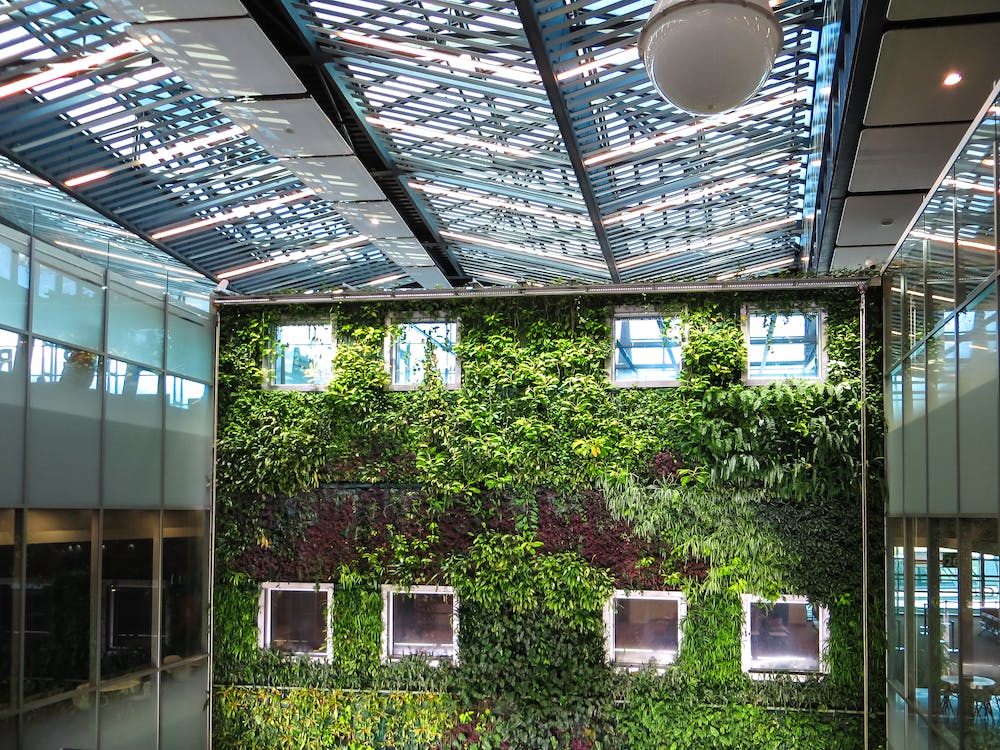As the global emphasis on sustainability strengthens, the Australian construction sector isn’t staying behind. Green architecture, once a niche concept, has become the driving force reshaping the way we design, plan, and build. This transition isn’t just about reducing carbon footprints; it’s about embracing a holistic approach that prioritises both the environment and inhabitants. Let’s delve into how green architecture influences modern construction practices in Australia.

1. Material Selection and Sourcing
One of the most significant shifts green architecture brings to the table is the focus on sustainable materials. Builders now actively seek materials that are renewable, have a lower carbon footprint, and are sourced locally. Think bamboo flooring, recycled steel, or even rammed earth walls. Local sourcing further reduces the environmental impact by cutting down on transportation emissions, while simultaneously boosting local economies.
2. Energy Efficiency
Green architecture places a substantial emphasis on reducing energy consumption. This has led to a surge in the adoption of passive design principles, where buildings are designed to maximise natural light and ventilation. The orientation of a building, placement of windows, and choice of insulation are meticulously planned. Solar panel installations and green roofing systems are no longer exceptions; they’re becoming the norms in Australian cities and suburbs.
3. Water Conservation
Australia, with its vast arid regions and periodic droughts, understands the value of water. Green architecture amplifies this understanding, integrating features like rainwater harvesting, greywater recycling, and efficient plumbing fixtures. These systems ensure minimal water wastage, making buildings more self-sufficient and reducing their strain on municipal water supplies.
4. Waste Reduction
In a green construction site, you’re more likely to see recycling bins than heaps of discarded materials. The philosophy is simple: waste as little as possible. From repurposing construction debris to choosing products with minimal packaging, every decision is made with an eye on waste reduction.
5. Enhancing Biodiversity
Green architecture isn’t solely about the buildings; it’s about the surrounding environment too. Australian construction practices now often involve native landscaping, creating green spaces that support local flora and fauna. Not only does this enhance biodiversity, but it also results in beautiful, low-maintenance landscapes that resonate with the Aussie spirit.
6. Healthier Indoor Environments
While sustainability is crucial, green architecture also focuses on the inhabitants. The use of non-toxic paints, natural lighting, efficient ventilation systems, and green materials ensures healthier indoor air quality. Australians can thus enjoy homes and workplaces that not only look good but also promote well-being.
7. Economic Benefits
Initially, green architecture might seem more costly due to the specialised materials and techniques. However, in the long run, these buildings prove more economical. Reduced energy and water bills, combined with lower maintenance costs, mean that the initial investments are recovered and often surpassed over the building’s lifespan.
8. Community and Social Engagement
Green buildings, especially in urban environments, often incorporate communal spaces like shared gardens, terraces, or even recreation centres. These spaces foster a sense of community, encouraging social interactions and promoting a collective approach to sustainability.
9. Regulatory and Policy Support
The influence of green architecture on construction practices is not just a grassroots movement; it’s also getting a considerable boost from Australian regulatory bodies. State and federal governments are formulating policies and guidelines that promote sustainable building practices. There’s a push for buildings to achieve various sustainability certifications, such as the Green Star rating from the Green Building Council of Australia. These certifications don’t just serve as badges of honour; they provide tangible benefits like tax breaks or expedited permit processes.

10. Technological Innovations and Integration
The digital age is intertwining with the green movement, creating some truly innovative solutions. Building Information Modelling (BIM) allows architects and builders to create precise digital replicas of their structures, ensuring every sustainability feature is optimally placed and functions effectively. Similarly, software programs can now simulate sunlight patterns, helping in designing structures that make the best use of natural light. It’s clear that the future of green architecture lies at the intersection of technology and sustainability.
11. Resilience and Adaptability
Australia’s diverse climatic zones, from tropical to arid, mean that green architecture isn’t a one-size-fits-all approach. Buildings are now being designed with adaptability in mind, allowing them to withstand changing environmental conditions. Whether it’s rising sea levels in coastal areas or increased bushfire threats in rural regions, green construction practices are ensuring that structures can adapt and remain resilient.
12. Educating the Masses
A significant part of the green architecture movement is about awareness and education. Construction firms, architects, and even material suppliers are now offering workshops, webinars, and training sessions, educating both professionals and the general public about the benefits of sustainable building practices. The more people know, the higher the demand for green structures, further propelling the industry towards sustainability.
13. Long-term Vision and Commitment
The adoption of green architecture signifies a shift from short-term profits to long-term benefits. Builders and developers now recognise that the true value of a building doesn’t lie just in its aesthetics or immediate functionality, but in its long-term impact on its inhabitants and the environment. This mindset change is leading to designs that are not just innovative but are also deeply rooted in sustainability principles.
14. Challenges and Solutions
Like any significant transformation, the move towards green architecture is not without its challenges. Whether it’s higher upfront costs, a learning curve with new technologies, or adapting to new regulations, the journey has its set of hurdles. However, the industry is responding proactively. Innovative financing models, cross-industry collaborations, and a robust feedback mechanism ensure that challenges are swiftly converted into opportunities for growth and learning.
15. Collaboration Across Sectors
The influence of green architecture on construction practices necessitates collaboration across various sectors. Architects, engineers, environmentalists, urban planners, and even community stakeholders now come together to create holistic, sustainable designs. These interdisciplinary collaborations often lead to groundbreaking solutions that consider environmental, societal, and aesthetic aspects.
16. Localised Approaches to Green Construction
While green principles remain consistent globally, their implementation often varies based on local conditions. In Australia, each region’s unique climate, topography, and cultural influences shape its green architecture practices. For instance, tropical regions might focus more on maximizing airflow and shading, while cooler regions emphasise insulation and heat conservation. This localised approach ensures that sustainability is not just a concept but a lived reality for inhabitants.
17. Retrofitting and Renovation
It’s not just new constructions that are feeling the influence of green architecture. Many older structures across Australia are undergoing retrofitting to make them more sustainable. This involves adding new technologies, improving insulation, or even redesigning spaces to reduce energy consumption. By updating these existing structures, Australia ensures that its historical and cultural landmarks also contribute to a greener future.
18. The Role of Public Opinion
In the age of information, public opinion plays a pivotal role in shaping industries, and construction is no exception. As Australians become more environmentally conscious, their demands for sustainable housing and infrastructure have skyrocketed. This public sentiment acts as a catalyst, pushing builders, architects, and urban planners to prioritize green architecture not just as an obligation but as a genuine commitment to the community they serve.
19. Research and Continuous Learning
The journey towards complete sustainability is ever-evolving. To keep pace, constant research and a commitment to learning are vital. Universities, technical institutes, and research bodies in Australia actively investigate new materials, technologies, and techniques to elevate green architecture further. Collaborative research projects, often funded by both the public and private sectors, highlight the nation’s collective drive towards an environmentally conscious construction industry.
20. The Economic Spin-offs
While the environmental and societal benefits of green architecture are clear, it’s also essential to note its economic impacts. The green building sector has created numerous jobs across Australia, from skilled positions in design and engineering to roles in green tech and material production. Furthermore, the demand for sustainable properties often translates to higher property values, benefiting both developers and homeowners in the long run.
The Ever-Evolving Landscape of Green Construction
As Australia continues its journey towards a more sustainable future, the influence of green architecture on its construction practices becomes increasingly profound. The blend of tradition, innovation, public participation, and an unwavering commitment to the environment makes the Australian construction sector a global frontrunner in sustainability. It’s a journey of continuous evolution, marked by challenges, innovations, and an ever-burning desire to build a better world.
Elevate Your Construction Management with Wunderbuild
In a dynamic environment like green construction, having a robust ally can make all the difference. Wunderbuild, a state-of-the-art construction management software, is designed with the intricacies of sustainable building in mind. Its comprehensive suite, encompassing everything from granular task tracking to efficient material sourcing, ensures that builders and architects have a seamless experience. And with the added convenience of a mobile app, managing green projects on-the-go becomes a breeze. If you’re looking to champion green architecture effectively and efficiently, Wunderbuild is the partner you’ve been searching for. Delve into its myriad features and witness construction management like never before. Find out more here.



